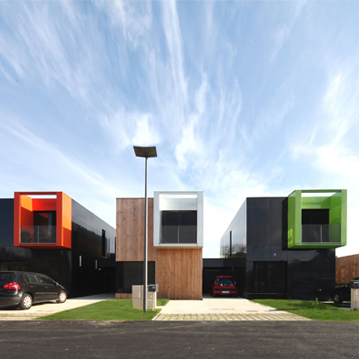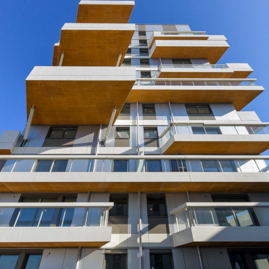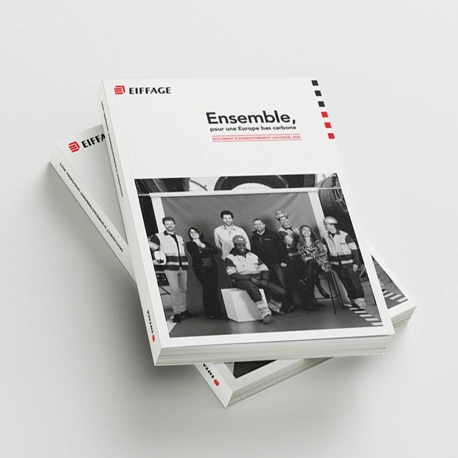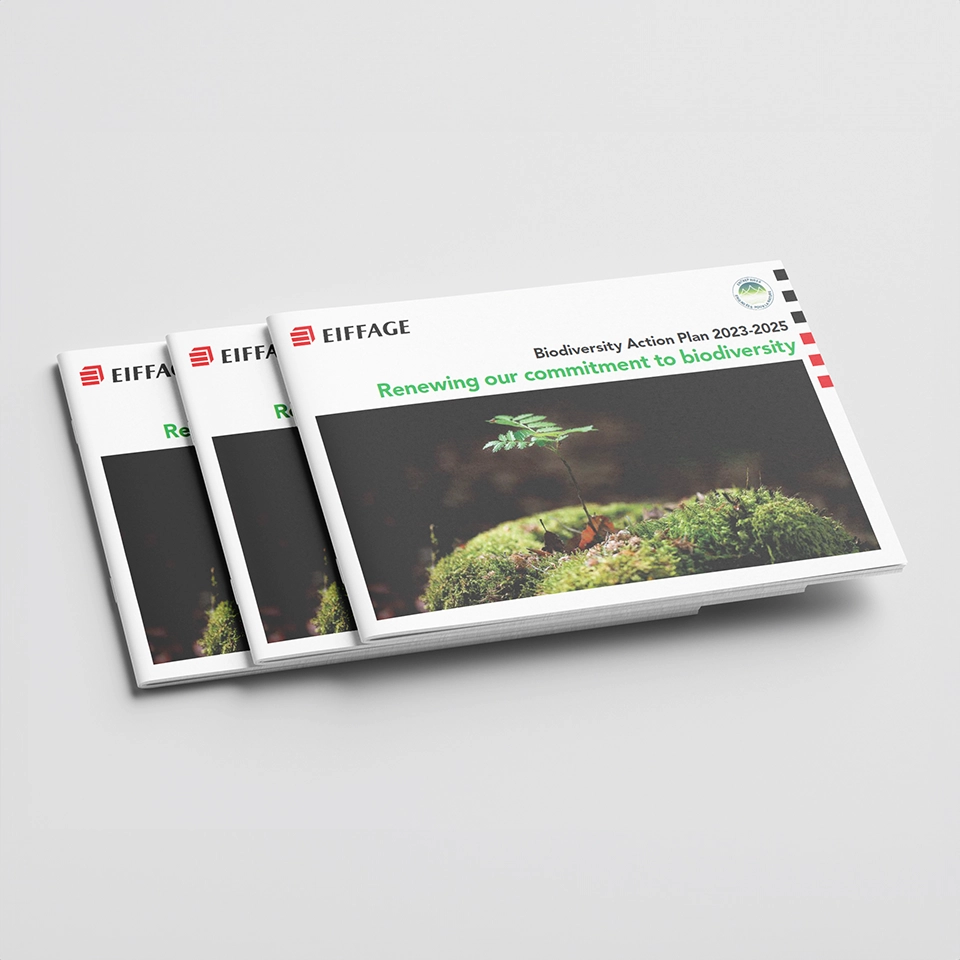Low carbon construction, a low carbon “material mix”
We favour the use of recovered, modified or recycled bio-based materials. We aim to develop and produce a low-carbon ‘materials mix’ on a large scale tailored to the needs of users and our clients so that they can consciously reduce their own carbon footprint.
Our vision
Eiffage now routinely uses materials with a low ecological footprint in a bid to reduce the carbon footprint of residential and service-sector buildings – which account for 17% of greenhouse gas emissions – and strengthen local supply chains of bio-based materials, which represent an opportunity for the Group to expand its operations.
Our principles
- The focus on low-carbon construction must be integrated across the entire value chain of the project – from urban planning to architecture, engineering to works, operation to the building’s projected end of life.
- We must build on our ‘low-carbon materials mix’ expertise by ensuring the right materials are in the right place in line with regional engineering priorities.
The keys to success
- Vertically integrate industrial production tools.
- Efficiently train our tradesmen on the purpose and use of old and new low-carbon materials.
- Routinely endeavour to source materials locally.
- Experiment and, if need be, help update regulations.
Develop a low-carbon ‘materials mix’

Our industrial and commercial services are supported by many innovative processes that enable us to take an industrial approach to low-carbon design and construction; for example, bio-based materials and geomaterials, new ranges of low-carbon concrete, recycled concrete that can be used to store carbon, ‘dry construction’ solutions, modularity, reuse, precasting and renovation. Furthermore, these solutions can be fully replicated, are better suited to diverse uses, take the life cycle into account and use natural resources sparingly.
The challenge of ‘dry construction’
In 2018 and 2019, Eiffage Construction stepped up its external growth strategy in ‘dry construction’ for on-site assembly by acquiring Savare and B3 EcoDesign. Dry construction does not require water, unlike traditional ‘wet’ construction (using materials such as concrete). B3 EcoDesign designs environmentally friendly, inexpensive housing made out of old shipping containers that have lost their carbon load, while Savare has 40 years’ experience in producing wood components, framework, beams and columns.

Bio-based materials boast a low ecological footprint and producing them contributes to the sustainable development of the local economy when they are available in the same region as our operations.
Our construction activities therefore use these materials from the forestry industry (i.e. activities associated with forest harvesting as they use wood and its by-products) and agriculture (as they use hemp, straw, flax and cork). Not only do bio-based materials improve the air quality inside buildings due to their numerous thermal and insulating properties, they also have good hygrometric, acoustic and visual properties, offering a high standard of comfort in the finished structure.
Wood takes pride of place in Hypérion
In Bordeaux (south-west France), Eiffage is building the tallest wooden tower in all of France. Dubbed “Hypérion”, the structure contains 82 housing units over 17 floors. It is designed to have a concrete core and laminated solid wood flooring supported by a column-beam structure. Delivery is scheduled for 2021.
A website for tracking construction materials
Following the wood label, Eiffage continues its commitment to traceability, initiated in 2017, for certain construction materials and launches a traceability website in partnership with Product DNA, a company specializing in product traceability and supply chain mapping.
Reducing or replacing carbon-emitting raw materials
Reducing the carbon footprint of building materials and structures is another growth area for lowcarbon construction. For instance, we are testing out a clinker-free clay-based cement that has a carbon footprint one quarter that of conventional cement. We also use another technique called ‘carbon sequestration’ which captures carbon in old concrete and greatly increases the recyclability of old aggregate.
Low-carbon design also applies to roads. Eiffage Route, a trailblazer in sustainable roads, has developed Recytal-ARM® to reprocess road surfaces at worksites, as well as alternative solutions involving cool-process, recycled or bio-based coated aggregate. This solution for the bio-regeneration of coated aggregates using plant-based binders divides the carbon footprint of our coated aggregate by 10.
L’ élément suivant est une vidéo Recytal-ARM® - Luçon
-
Ecodesign for optimal use of materials and services
Aside from materials, we are working on developing service-sharing plans or providing services designed for multiple uses.
-
Nature in an urban setting and urban agriculture
The Group facilitates the emergence of appealing urban centres that harmoniously blend the environment, biodiversity, sustainable farming and well-being for people living in cities.
-

